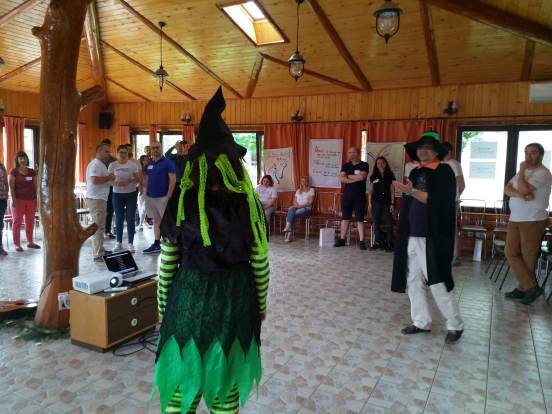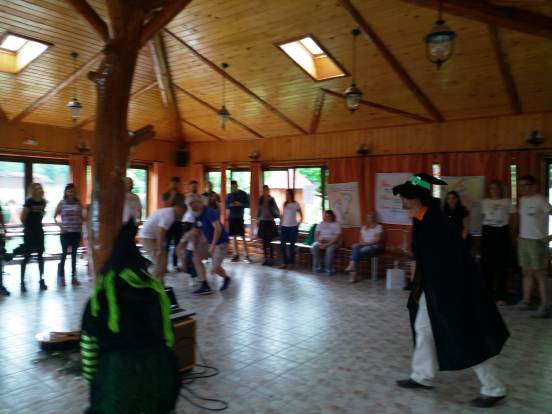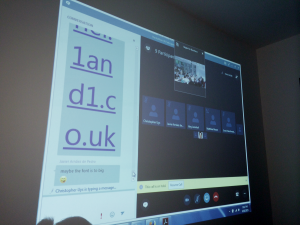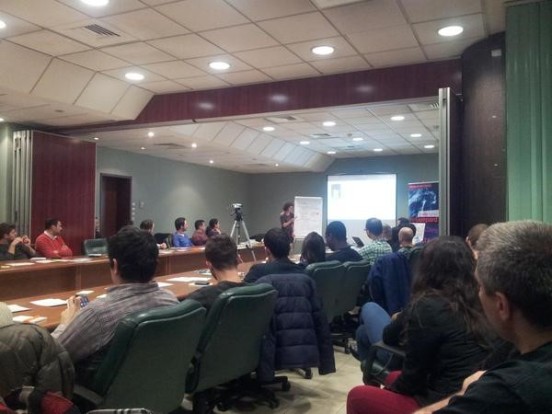Night is falling again. Long shadows from the outside transformed the trees into apparent giants clothed in funny white shirts. I hear usual noise from the corridor. People talking, TVs humming, dishes, steps, rolling boxes, then Silence.
It’s a normal evening here at the MB hospital where I’ve been for the past 3 days.
The first hours were hectic and barely I remember details. I entered our dark room on Sunday night at about 1 AM.
I was coming a long way…
Just one week ago I was frantically going about preparing for my preferred yearly Camp event at Rückersbach, Germany. The second day at 8:40 a plane was going to take me 1500 km closer to the destination.
Suddenly, I have this Flu outburst in the middle of the store while doing last-minute shopping, my head was heavy, my lungs were aching, sense of smelling long gone…
Fortunately at home, after a few pills and some inhalation I feel much better.
In the morning, 5:45 off I go to the trip!
Only good things happened for the next four days, a magical atmosphere created by heartful individuals passioned and curious and playful…
And this is the final day. Sunday morning. My coughing is ever stronger and painful, every inspiration brings more pain to the mix. I give up talking, I just sit and watch.
Someone gives me some Ibuprofen forte magic pill that puts me on for the next 6 hours.
Sunday 2pm – the event is over. I feel like flying right away 🙂
My plane takes off at 6:20, so I drink even more tea, take some more Halsschmerz pills (lung pills) and I wait.
We then drive to FRA airport then I go all the way to the gate like I am in a dream. All sounds around me are weak as in an old movie. I am getting dizzy now.
After a seemingly long wait we are called through the gate. I get in the plane.
Huh! Two more hours and it will all be over!
After about one hour into the flight something goes wrong. My eyes want to roll, I become more and more dizzy. My throat feels like one thousand pin pricks. Everytime I inspire I feel pain.
And the ears. God, the ears!
Imagine someone throwing a giant bump hammer at your both ears all at the same time.
I am just grabbing my ears, twist them, toss them, try to take them out of my head. And the pressure increases every minute as we descend.
In order not to faint I am fixing stubbornly the table handle in front of me and count half hour, quarter, minutes. Getting small visual hints from the map ahead: now we are really close. What is this guy waiting? Let’s land!
Finally when the ground is touched I can hear next to nothing, my body is overheated and I almost fainted, but I didn’t! I made it!
Cool stuff but my consciousness is at the brink between dream and awake. I simply cannot feel my legs. I am not able to descend the plane by myself. In fact I am only able to ask for medical help.
After a seemingly very long wait they come and give me first-aid: blood pressure: 8, temperature: 40.3 degrees centigrade, overall status: dizzy. After they perfuse me with serum I slowly recover…
Now I have to answer the usual protocol questions. Where have you been? Since when you have this cold? Have you declared it at FRA airport? No? Well done! Otherwise you’d still be there by now.
After some more questions and a loong waiting an officer asks for my ID, so that I lawfully re-enter the country and off I go with the special reduced mobility lift attached to the plane: how cool is that?!
It’s now 11 PM (1.5 hours after the plane landed)
I am taken via Airport Ambulance to the medical cabinet. They put me again to some tests, all seems fine now – Thank God. I could also see the crazy weather outside so much different from that in Germany three hours before.
The Road
I had never been gone by ambulance before. Never. Ever before.
So it was a new experience, my perfusion attached and dangling above my head, the car going at normal pace to a seemingly never ending journey.
With me is this calm lady Assistant asking from time to time if everything was ok. It was!
************************************************************************************

Sunbathing… It’s the first time since I am here that I get to see the sun this long.
ONE FULL HOUR! That’s due to the big building in front. Nevertheless the feeling of sleeping while warm sunrays are bathing your face is ludicrous.
I feel so much better now. And it’s been quiet… Well, let me introduce you my new room mate: Big shoulders, thunder voice, bald-headed, and…
American!?!!
So from all Bucharest population that gets sick with Flu on a late February afternoon, here is this American diplomat guy, that is introduced into my room along with a talkative tall Romanian lady presented: “The doctor”.
His story is also good: He has almost fainted in his private clinic ER (Emergency Room) due to low blood pressure and low Oxygen saturation in the blood and he was directed here with Flu suspicions.
He is coming along with a big oxygen tank that is immediately replaced with the wall oxygen sock. He is immediately taken care of by the nice personnel and after a short investgation with the Lifesignals display, his mask is put away 😉
?!? “The doctor” is thinking to herself – here at the hospital they have different standards for Oxygen saturation as in our Clinic…
All in all the man seems weaken but OK. While he is asked for details his voice is thundering on the small room. In the mean time various people are setting up his space, bring in perfusors, take his blood pressure.
For me it’s an interesting opportunity to talk but for now I keep the questions to myself.
***********************************************************************************
Some conversation on the corridor draws my attention:
– Where ya going papa? See you have that thing attached to ya ( the drain bag )
– I’m going home!
– How come you’re going home? How about going back to your bed! Stop playing with that bag!
– I don’t want to go to bed!
– Go to ya bed into the saloon right now!
– Which saloon?
– Which saloon? YOUR saloon!
– But I am hungry!
– Why haven’t you eaten when the food was here?
– I didn’t like it!
– Go to bed! (Come to bed – voices from his saloon are calling)
– I want to go home, I have a life!
– I also have a life… of a small puppy ( a dog’s life)
And the conversation settles here. After some rumors we can assume the old papa is back to his bed. I don’t know whether someone is really supposed to pick him up today. I try to relate to his impatience and I am fully with him.
**********************************************************************************
After 4 days and 5 nights I feel like I can’t wait till tomorrow.
Still one half afternoon and one night remaining then the hectic mornings and who knows what…
Adrian Suciu
Bucharest, Thursday 1st March 2018



















 Is it for me?
Is it for me?

 About the platform I have to say it’s a pretty powerful virtualization API that will soon be launched for all 1&1 Cloud Server customers to play with and contribute.
About the platform I have to say it’s a pretty powerful virtualization API that will soon be launched for all 1&1 Cloud Server customers to play with and contribute.





